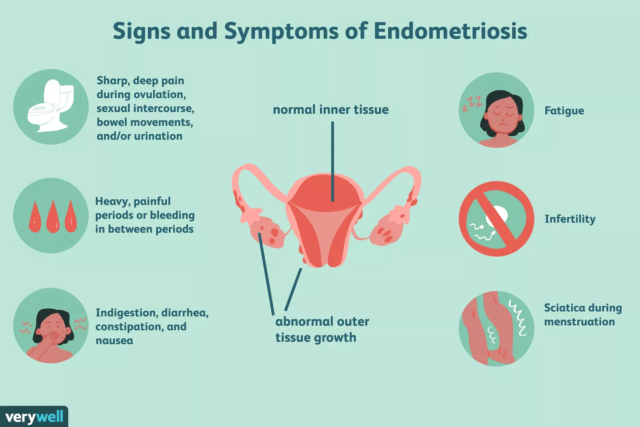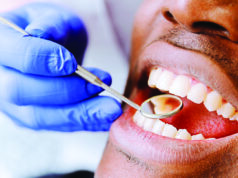Lately, there is a growing trend of infertility among women, which health experts associate with a medical condition termed as endometriosis. Our writer Agnes Kasemire had a chat with some doctors and below, they explain what the condition is and how it can be managed.
Understanding endometriosis

According to Dr Edward Tamale Sali, a senior consultant gynecologist and fertility specialist at Women’s Hospital and Fertility Centre Bukoto, endometriosis is a gynecological condition where tissues or cells similar to those that line the inner of the uterus develop in other abnormal sites outside the uterus, hence the name endometriosis.
Dr Sali explains that this means these endometriosis tissues grow and shed off monthly like the lining of the womb/uterus. As such, the affected areas bleed every month as the woman gets her periods.
How to tell signs
The earliest warning sign for endometriosis is pain and menstrual irregularities, Dr Sali says.
He adds that painful periods that keep getting worse every month or pelvic pain that does not respond to treatment should raise suspicion is a warning sign.
Areas commonly affected
He further explains that endometriosis commonly affects the pelvis areas, especially the ovaries and it normally presents with chronic pelvic pain that gets worse around periods and over time.
Studies show that about 75 per cent of the condition mostly affects the ovaries, consequently reducing the quality of the eggs.
As such, during the monthly menstruation period, the cells in the ovaries also start shedding and since the blood cannot flow out because it is restricted, the affected woman experiences pain.
It is the reason that women battling with the condition experience chronic pelvic pain and severe painful periods.
Sometimes the condition spreads to other parts of the body which include: fallopian tubes, abdominal cavity covering the lining of the intestines or even the navel chest, consequently affecting the lungs.
When the endometriosis involves the chest, the blood will accumulate in the chest cavity causing chest pain and breathing complications.
Dr Sali also explains that in the past he has handled four cases of women with endometriosis in the chest cavity.
Dr Andabati Gonzaga, a senior consultant gynecologist at Bethany Women and Family Hospital Luzira says chest complication can cause collapse of the lungs. He adds that it can be fatal if the condition is not treated or managed early.
He estimates that he has seen some patients going as far as being admitted in Intensive Care Unit (ICU) because of chest complications brought about by endometriosis.
In addition, the condition causes infertility especially when the tissues spread to the fallopian tubes.
“Every month the sites on or close to the fallopian tubes in the pelvis bleed, blood does not get out.
“This gradually causes irritation and scar formation that often involves the tubes hence causing blockage,” Dr Andabati says.
He explains further that this means the woman cannot conceive because the eggs cannot travel to the fallopian tube to get fertilization, and sometimes the scarring is so severe that it causes the pelvic organs to get stuck together, a condition called “frozen pelvis’’.
He estimates that in a month, he registers around 80 to 100 women battling with infertility as a result of endometriosis
Who is at risk?
According to Dr Sali, endometriosis is not discriminative. It affects 10 per cent of woman in the productive age of 15 to 45 years.
However, the peak is in the age bracket of between 30 and 40 years. His facility alone registers about 30 cases of women battling with endometriosis every year.
He, however, notes that the problem could be bigger except some affected women do not know where to go for medical treatment while others cannot afford.
Risk factors
Although, the cause is not known, Dr Andabati explains that pelvic operations tend to increase the risk of endometriosis.
Through operation the endometrial tissues can spread to other places. In addition, smoking and bad nutritional habits such as eating fatty unhealthy foods are associated with the condition.
He notes that if a woman is at risk of developing the condition and they avoid those risk factors, they can prevent the onset of the condition or the condition becoming worse.
He says: “For example if you maintain a healthy body weight or you eat healthy foods, even if you already have the condition, it is likely not be very aggressive.”
Is it treatable?
Medical reports say the disease is curable if discovered early. Dr Andabati says the condition can be treated medically by administering medication to stop the disease from getting worse.
One of the treatment modalities for endometriosis is to put the patient on long-term medication containing high levels of progesterone; a hormone that opposes the effect of estrogen on endometrial cells.
This means during this time, the woman will not menstruate.
If the endometriosis is mild, the cells can be suppressed for some time and if the woman wants to conceive, the treatment is stopped.
However, this is a short-term intervention. The best treatment option is to remove the endometriosis either through open surgery or laparoscopy depending on how advanced the condition is.
Laparoscopy is a surgical diagnostic minimally invasive procedure that involves making small incisions to examine abdominal organs.
Currently, laparoscopy is the method of choice for treating endometriosis.
For accumulated blood in the lungs, Dr Andabati explains that the best intervention is to admit the patient and drain it out. Alternatively, the patient may be advised to conceive so that she does not have to menstruate.
Women with mild symptoms of endometriosis and have failed to conceive are helped to become pregnant through In Vitro Fertilization (IVF).
The good news is that the condition is self-limiting. Once a woman hits menopause and stops menstruating, the endometrial cells regress completely or can even die off because the body has stopped producing estrogen. Estrogen is a hormone that makes the endometrial cells to multiply the condition.
He adds that the same principle is used to medically treat endometriosis by either lowering or blocking the production of estrogen.
Late diagnosis still a challenge
Dr Andabati warns that one of the challenges in the treatment and management of endometriosis is missed or delayed diagnosis.
As such, patients often move from doctor to doctor being treated for pelvic inflammatory diseases (PIDs) and by the time the right diagnosis is made, the disease is advanced to late stages.
The definitive diagnosis is by laparoscopy. Through laparoscopy the doctor sees and confirms the condition.
Is it genetic?
Although the exact cause is not known, Dr Sali says there is a tendency for the condition to run in family lines.
He adds that he has treated a family of four girls in Zanzibar who have endometriosis and had failed to conceive. Luckily after treatment, the girls were able to conceive.






















